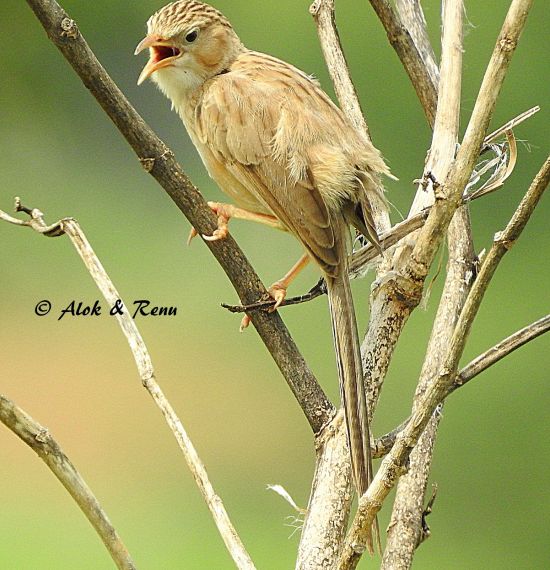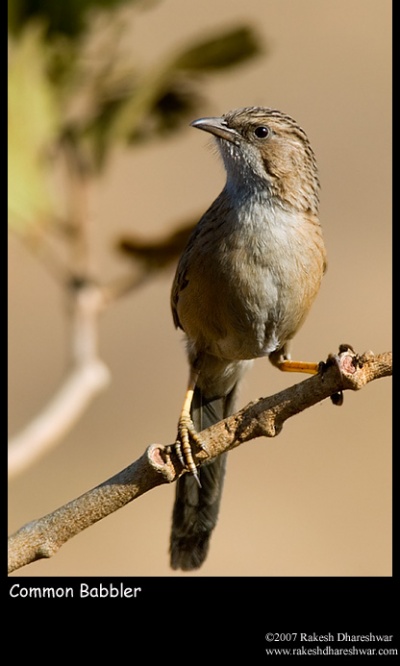Alternative name: Scrub Babbler
- Argya caudata
Turdoides caudata
Identification
20-26 cm (7¾-10¼ in)
- Very long-tailed Babbler
- Slender, slightly down-curved bill
- Dark eyes
- Strong dark streaks on pale buff to grey upperparts
- Unmarked pale underparts
Confusion species
Spiny Babbler in Nepal is darker above and paler below. Striated Babbler in northern India and Pakistan has a dark throat.
Distribution
Found in South Asia: From southern Pakistan to India, Nepal and Bangladesh.
Resident.
Taxonomy
This species is also sometimes placed in genus Turdoides.
Subspecies
Two subspecies accepted[3]:
- T. c. caudata in eastern Pakistan, most of India (except the Himalayas and northeastern India), and southwestern Nepal and Bangladesh; also Rameswaram Island
- T. c. eclipes in northern Pakistan and adjacent India
Afghan Babbler was formerly considered conspecific.
Habitat
Dry open scrubland, semi-deserts, thorn-scrub, sandy floodplains and rocky hills.
Behaviour
Diet
Feeds mainly on insects but takes also grains, berries and nectar. Forages in noisy groups of 6 - 7 birds (called Seven Sisters in India, a name which is also used for Yellow-billed Babbler) but groups can be bigger.
Breeding
Breeding season all year. May breed several times a year. Co-operative breeder with complex family structures. The nest is a neat, deep cup, made of grasses and placed in a bush or a small tree. Lays 3 - 5 eggs.
Vocalisation
Recording by Alok Tewari
Keoladeo National Park, India, June-2017
Long call by two individuals, calling after daybreak. Very brief calls by Indian Peafowl, Plain Prinia and Red-wattled Lapwing.
Recording by Alok Tewari
Keoladeo National Park, India, July-2015
Single call / song by one individual in peak summer-monsoon month, early morning time.
References
- Del Hoyo, J, A Elliott, and D Christie, eds. 2007. Handbook of the Birds of the World. Volume 12: Picathartes to Tits and Chickadees. Barcelona: Lynx Edicions. ISBN 978-8496553422
- Rasmussen, PC and JC Anderton. 2005. Birds of South Asia: The Ripley Guide. Barcelona: Lynx Edicions. ISBN 978-8487334672
- Clements, J. F., T. S. Schulenberg, M. J. Iliff, S. M. Billerman, T. A. Fredericks, J. A. Gerbracht, D. Lepage, B. L. Sullivan, and C. L. Wood. 2021. The eBird/Clements checklist of Birds of the World: v2021. Downloaded from https://www.birds.cornell.edu/clementschecklist/download/
Recommended Citation
- BirdForum Opus contributors. (2025) Common Babbler. In: BirdForum, the forum for wild birds and birding. Retrieved 9 May 2025 from https://www.birdforum.net/opus/Common_Babbler
External Links
GSearch checked for 2020 platform.





